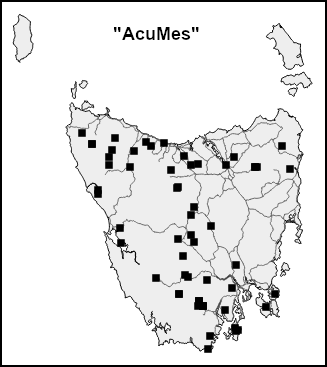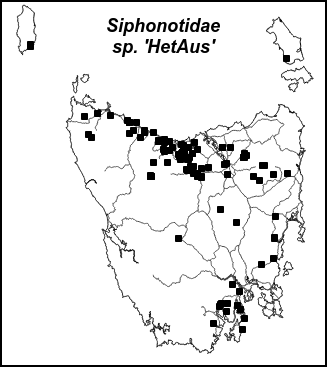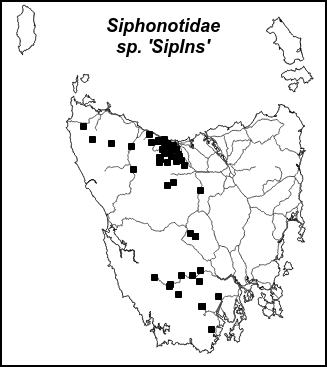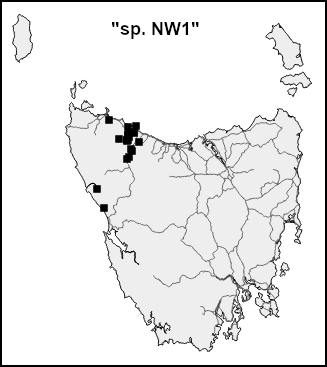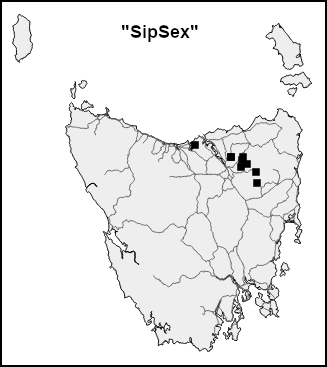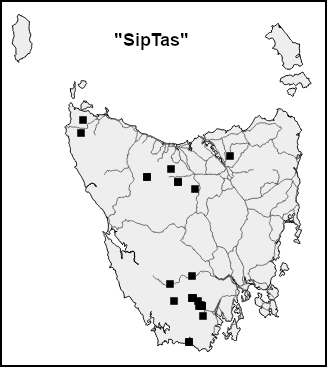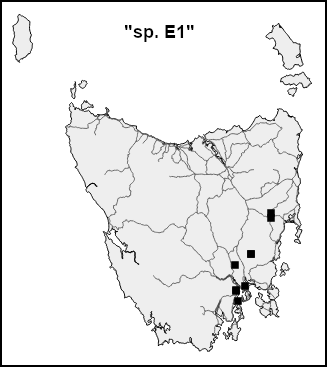Polyzoniida
All Tasmanian polyzoniidans are in the family Siphonotidae. Seven local species have been recognised, five of which were given names by Dennis Black, formerly of La Trobe University, in a 1995 PhD thesis. The names have not been validly published and are not nomenclaturally available. In this guide I use codenames based on Black's names.
Polyzoniidans can be found in leaf litter, in rotting logs and under bark, logs and stones. They can add leg-bearing segments as adults, and older females of one of our species ("AcuMes") may have as many as 300 legs. Female polyzoniidans brood their eggs.
Distribution maps are at the bottom of the page.
"AcuMes"
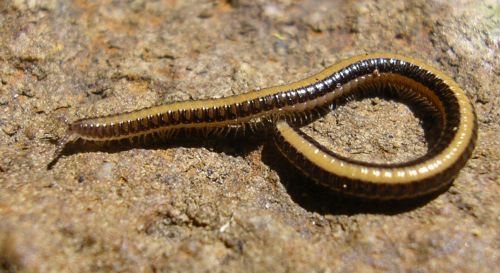
"AcuMes" from Hills Road, Franklin. Image by Geoff Fenton, used with permission.
Length to 30 mm; body smooth, light-coloured with broad, dark lateral bands. Most individuals have dark brown, nearly black lateral bands, but in some populations the lateral bands are a light chestnut brown. The light median colour ranges from ivory white through pale yellow to salmon orange. This species seems to prefer wet forest. It is widely distributed in Tasmania up to ca 1150 m elevation, but has not yet been found on the central East Coast. Dense aggregations of "AcuMes" are sometimes discovered in accumulations of leaf litter, in rotting stumps and under bark on standing trees. On Blue Tier I found a female brooding ca 150 eggs.
"HetAus"
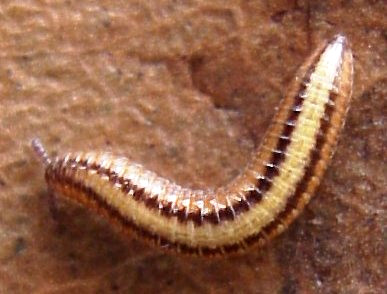
Length to 10 mm; body smooth, pale yellow on top with dark paramedian bands and tan or orange sides. "HetAus" is semi-arboreal in forest but can also be found in non-forest habitats. It usually occurs in multi-aged groups. Widespread in Tasmania from sea level to ca 900 m, "HetAus" is also known from central and eastern Victoria. It can be abundant in Pinus radiata plantations.
"SipIns"

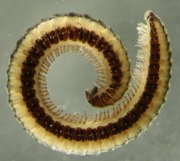
Length to 15 mm; body smooth, near-white or pale yellow with dark median and lateral bands. "SipIns" and "sp. NW1" (see below) both have a dark median band, but "sp. NW1" lacks the two dark lateral bands. "SipIns" is surprisingly fast-moving when disturbed. Unlike some other Tasmanian polyzoniidans, "SipIns" is rarely found in groups. It is one of the millipede species whose distribution abruptly stops at the Mersey Break, a faunal boundary in north central Tasmania. "SipIns" seems to prefer wet forest up to ca 800 m. It has also been found in eucalypt regrowth arising from clearfall-and-burn silviculture and in Pinus radiata plantations.
"sp. NW1"
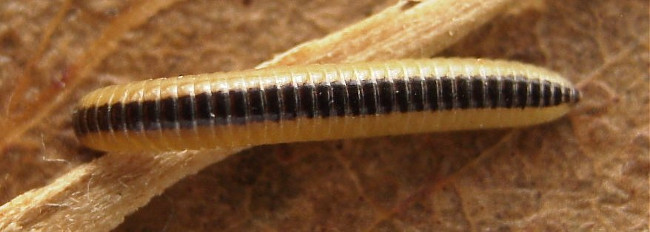
Length to 15 mm; body smooth, near-white or pale yellow with a dark median band. While "sp. NW1" and "SipIns" (see above) both have a dark median band, "SipIns" has two dark lateral bands missing in "sp. NW1", and the median band is proportionally broader in "sp. NW1". This species is generally solitary and fairly uncommon, seeming to prefer low-elevation wet forest. It has also been found in Pinus radiata plantations.
"SipSex"

Length to 11 mm; body lightly "hairy", near-white or pale yellow with dark lateral bands. Looking like a smaller and hairier version of "AcuMes", "SipSex" is an uncommon species in eastern Tasmania. In some specimens there is a faint, dark, mid-dorsal band. "SipSex" occurs in a range of forest types up to ca 800 m elevation.
"SipTas"
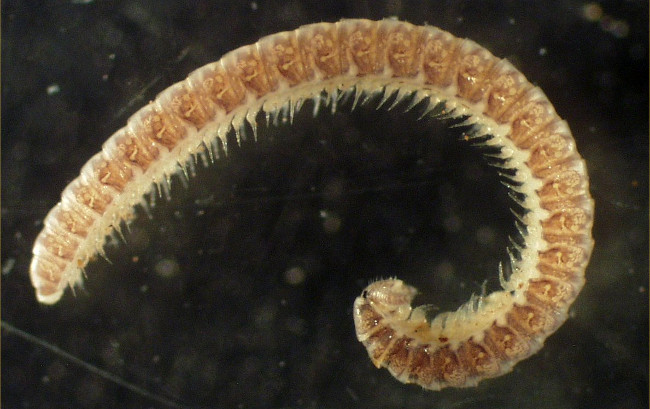
Length 6-7 mm; body smooth, pale reddish-brown with pattern as shown above. Although widespread, "SipTas" appears to be restricted to wet forest and has been found from sea level up to ca 1000 m. In the Southern Forests it is common both in old-growth forest and in eucalypt regrowth arising from clearfall-and-burn silviculture.
"sp. E1"
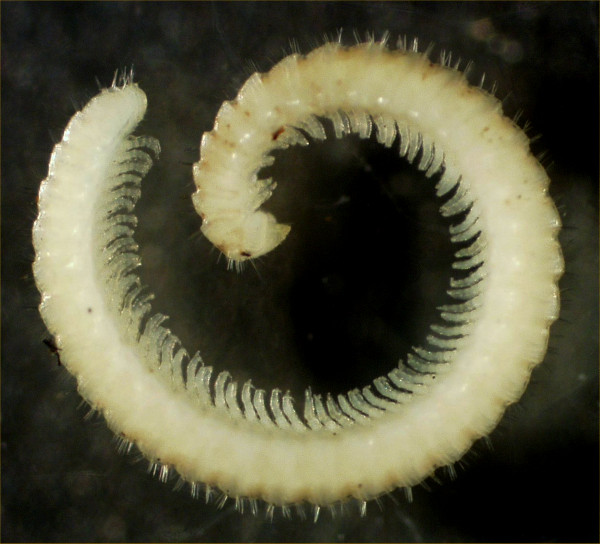
Length to 7 mm; body very "hairy", white or very pale yellow. Because it is an inconspicuous species, "sp. E1" has probably been overlooked within its range. It has been collected mainly in dry eucalypt forest at lower elevations.
